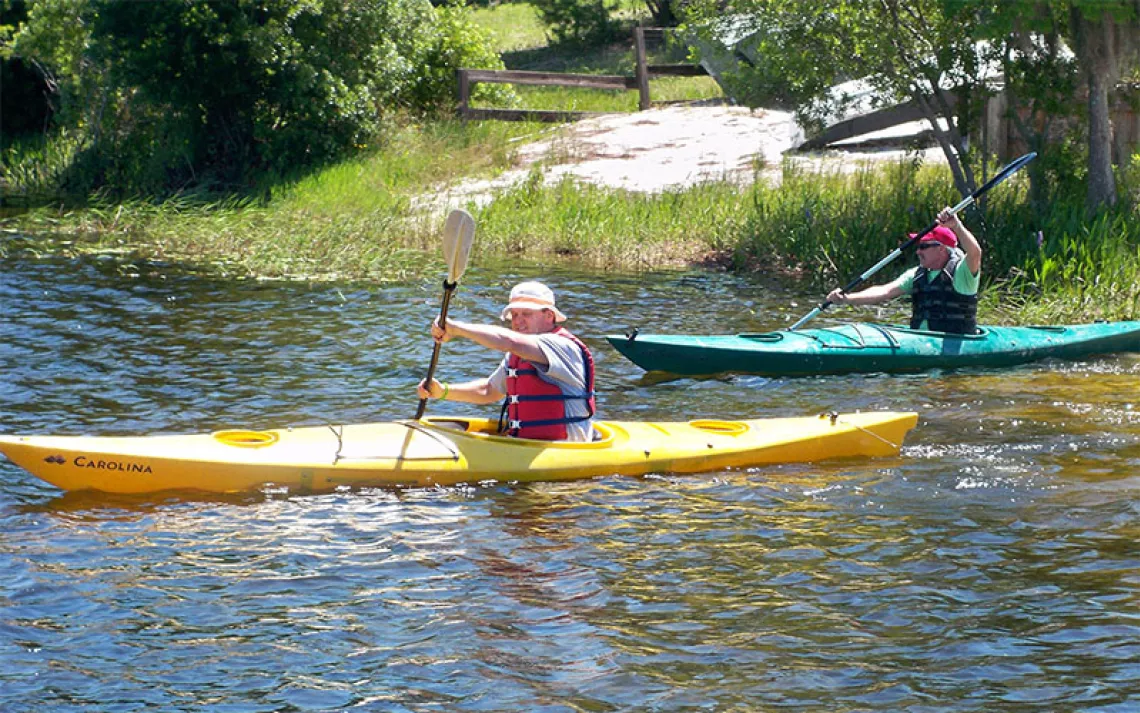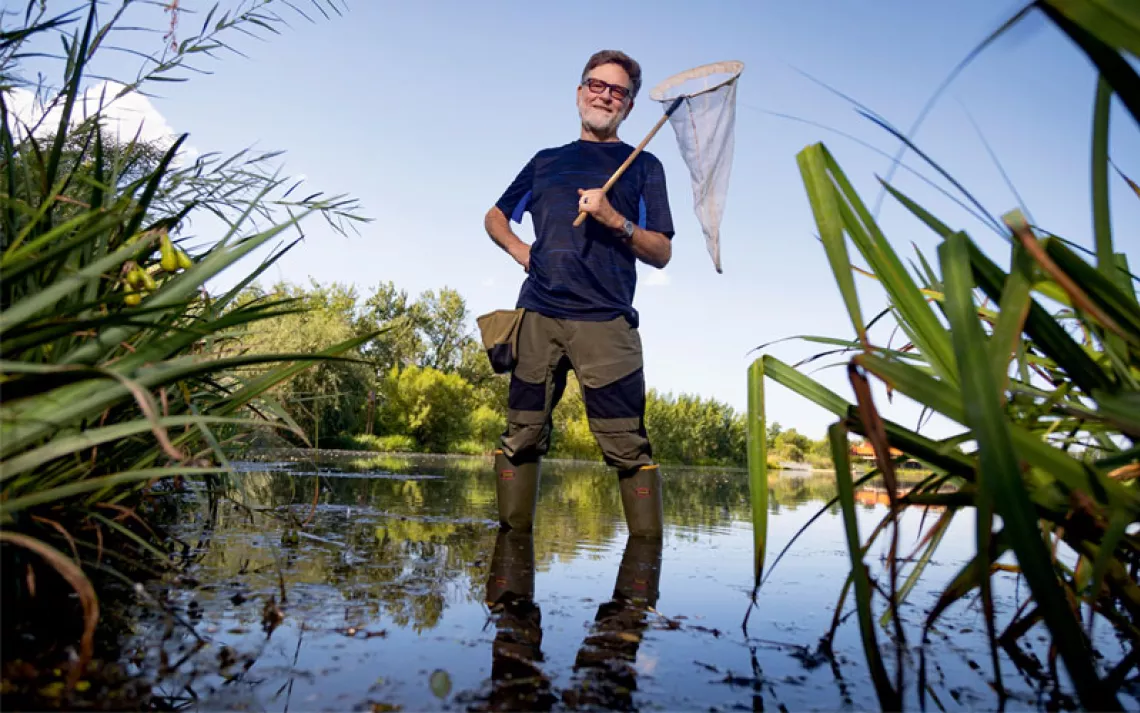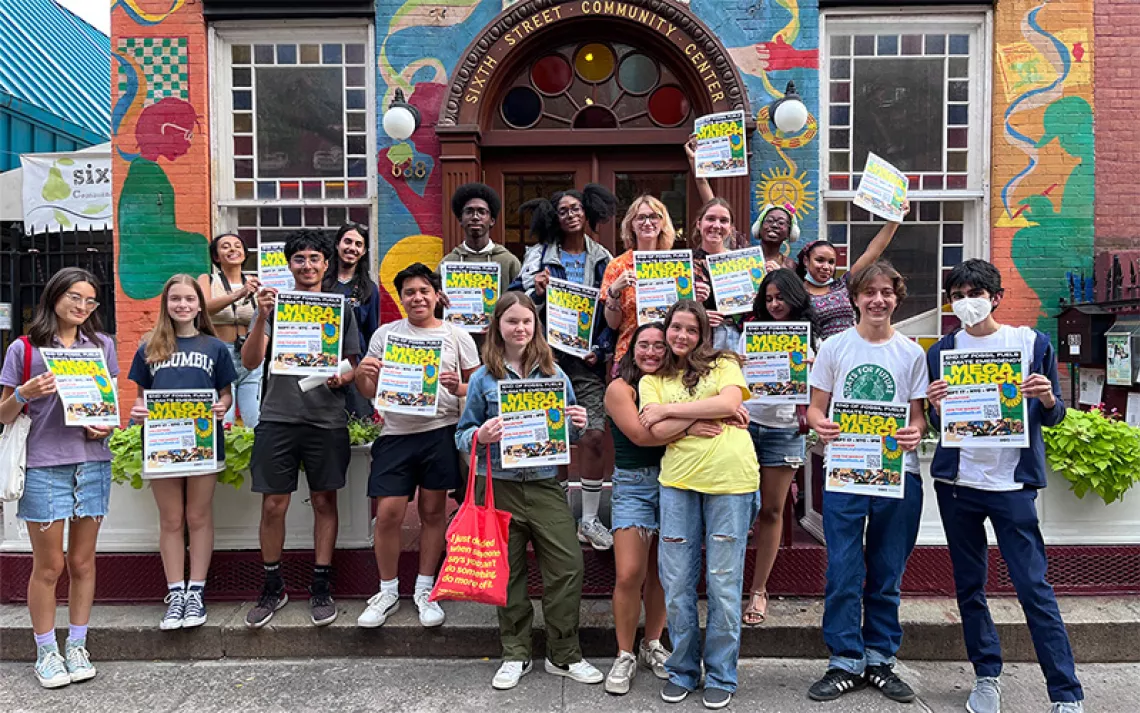The Outdoor Preschool Movement
A parent makes the case for Waldkindergarten

Students play outdoors at the Pattee Canyon Outdoor School. | Photo by Rachel Kantor
The morning routine at Pattee Canyon Outdoor School in Missoula, Montana, is the same as at any other preschool—except in the ways that it’s not. Missing is the ritual unpeeling of clothing layers, the chaos of the boot room. Here, everything happens outside: Parents stand by idling cars in the school’s driveway and pull mittens onto children’s hands, squeeze balaclavas over heads, remind little ones that their backpacks contain an extra sweater or rain pants or a plastic bag full of food scraps for the school chickens. The school’s owner and lead teacher, Rachel Kantor, greets the students and their parents. She is clad in sufficient outdoor gear for whatever the day will hold. The parents are the odd people out in this scenario, conspicuously dressed for a day spent inside.
As they wait for their classmates to arrive, the students visit with the school’s three sheep, throw balls for the affectionate geriatric dog, or climb on a semi-secure play structure built from a large pine tree that fell in a windstorm earlier that year. Rather than remove the tree, Kantor added a few strategically placed ropes and boards, then invited school families to bring in their old Christmas trees to shore it up even further. Beside the structure is a pile of dirt and rocks onto which has been fastened a plastic slide. The "dirt slide" mimics the steep hillsides the children love to scramble up and skid down during hikes in the woods.
My three-year-old son, Isaac, is a student at this school. In spite of the wildness of the setting, “civilized” is the word that comes to mind when I watch Isaac and his classmates going about their daily routines. They sit calmly in a circle and take turns sharing. They line up well when it’s time to set off into the woods behind the school. They accept without resistance the teacher’s corrections and redirections. And yet they also use knives, climb trees, and sit around raging open fires on cold days, passing around hot water in a kettle that each preschooler pours into a small metal cup for tea. All of this while demonstrating better self-control than I’ve witnessed in my older son’s kindergarten classroom of students twice their age.
The outdoor preschool movement, long familiar in parts of northern and western Europe (where it’s known as waldkindergarten, or “forest kindergarten”), has been gaining traction in the United States over the past decade, thanks in large part to Richard Luov’s groundbreaking book Last Child in the Woods. Luov introduced U.S. readers to a condition he termed “nature-deficit disorder.” A lack of time spent outside, he argues, can be blamed for everything from childhood obesity and hyperactivity to the alarming uptick in diagnoses of anxiety and depression in children. His thesis is borne out by research from organizations as varied as the Nature Conservancy and the World Health Organization. Compared to indoor-schooled preschoolers, students educated outdoors are said to have a better sense of focus, display fewer behavioral and health problems, develop more robust vocabularies and better risk-assessment skills, get sick less—the list goes on.
It’s one thing to read the claims of the already converted and another entirely to witness the phenomenon in action. Before enrolling Isaac at Pattee Canyon Outdoor School, I spent months tiptoeing around the idea of it, looking through the school’s website, chatting with Kantor at an Earth Day festival in town—her pamphlet-laden table partially covered in a mountain lion hide. To send a preschooler to school outside year round seemed like such a bold move—risky even. And now, I can’t imagine doing anything else.
Adjusting to Outside
Isaac’s classmates are drawn from a surprisingly diverse pool of families. There are those who chose waldkindergarten simply because it reflected the existing family culture of a love for the outdoors; still others were seeking a solution for various health or behavioral challenges. Kantor has had great success with a student on the autism spectrum as well as those managing ADHD and various sensory issues. “The energy is a problem inside,” she says, “but because they’re outside they can expend all that energy in a productive way, which allows them to process and retain more information.”
While most kids take to the outdoor setting with little to no effort, there are those who need to warm up to the idea of spending several straight hours outdoors each day. “It depends on the child,” says Kantor. “How often, and in what weather conditions, their family spends time outside. Most adjust immediately, while the longest it’s taken is three weeks.” She talks about witnessing the transformation of a particular little girl who, early on in the school year, would cry whenever the weather conditions weren’t ideal. “She’s now just as happy playing outside on the cold and rainy days as when it’s warm and sunny out.”
Surprisingly, it’s often the adult caretakers who struggle the most at first. “I had to overcome a lifetime's worth of conditioning where I viewed challenging weather as negative and something to be avoided,” says Kantor. “But I no longer have to brace myself to spend time outside in the frigid cold or pouring rain. I can see the joys and discoveries that each season and type of weather brings.”
When pressed to elaborate on the joys of a day in the rain, Kantor lists off so many things so casually that I feel naive for having imagined why rain would ever keep children inside. “Pouring rain brings worms to the surface,” she says. “It makes puddles for jumping in, or to float a boat, or just to fill buckets to pour. Rain makes mud for animals to leave tracks in, for kids to sculpt with.”
Learning Outdoors
Not only has Isaac excelled in preschool, but also his waldkindergarten experience appears to be laying the ground work for a kind of environmental citizenship. In his formative years, he’s experiencing nature as the stage on which the bulk of his early educational and social development is taking place, not as something separate from it.
He works on pre-math skills by counting eggs that he and his friends have gathered from the school’s chicken coop and by arranging sticks of varying lengths into patterns and sequences. He learns teamwork and problem-solving by wrangling a rotten tree trunk out of the ground with his peers and by working with a friend to achieve balance on a board that’s been propped seesaw-like on a stone. He figures out the basic idea of fulcrums and levers (as well as developing gross motor skills), whether or not he yet knows the words. A lot of what he does isn’t all that different from what he’d do in an ordinary preschool classroom—art projects, music class, story time—it just happens to take place outside.
For me, as a parent, one of the most compelling aspects of an outdoor school education is the way that the method helps with the development of risk-assessment skills: teaching students to hone their own sense of what’s dangerous or not. Students at Isaac’s school are encouraged to take physical risks, and occasionally suffer the attendant consequences. They work with real tools—small saws, pocket knives, hot glue guns—with the teacher close at hand, supervising but not hovering.
Isaac has come home with bee stings, burns, and plenty of scratches, but both he and his teacher approach them in a matter-of-fact way, as physical evidence of a day spent out in the world—and, in the case of the glue gun, a lesson learned about handling a tool with utmost attention.
A Full Family Education
After a year’s worth of outdoor preschool, my son has not only learned to make his way out in the elements, but also to write his name, identify the letters of the alphabet, count to 10 in three languages, and become just as kindergarten-ready as he would have in a more conventional preschool setting. Having put his older brother through a conventional preschool, I can clearly see that Isaac has met all of the benchmarks of an early childhood educational program and then some.
I have no way of knowing if my son was born into the world destined to be at ease in the outdoors, but it seems impossible to deny that his preschool experience played a role. On the days when he identifies the call of a northern flicker from across the yard, or casually pops a wild glacier lily in his mouth on a hike—only to sense my concern and inform me that it’s edible—I realize the ways that his outdoor education is also educating me. On our days off, I no longer haul the boys around to the various indoor activities that used to be a staple of our free time; instead, I take them to wild spots in and around our town and let them roam, ask questions, get dirty, and just be.
 The Magazine of The Sierra Club
The Magazine of The Sierra Club



